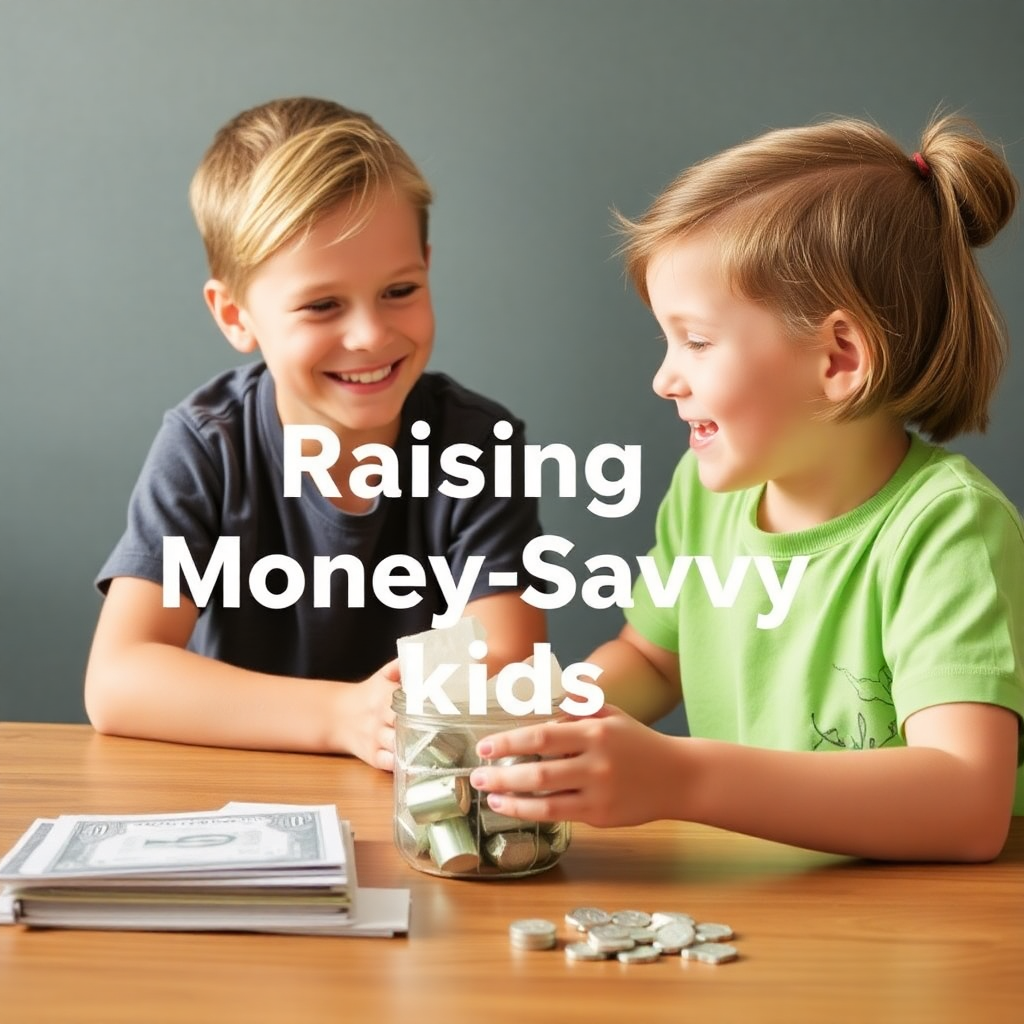Money Lessons for Tykes: The Ace Handbook for Parents and Teachers

Introduction
G’day, parents and teachers! Raising a ripper young entrepreneur is no walk in the park, and one of the biggest pieces of the puzzle is financial literacy for kids. Getting a handle on money from a young age can set little Aussies up for success, whether they’re dreaming of launching a startup or just want to be savvy with their pocket money. Teaching kids about cash isn’t always a breeze—it takes planning, patience, and a fair bit of creativity. In this guide, we’ll unpack what financial literacy means, why it’s a game-changer, and share cracking resources to help parents and educators introduce these concepts to the next generation of biz whizzes. With Aussie household debt hitting $2.8 trillion in 2024 (Australian Bureau of Statistics), and only 23% of parents feeling confident teaching money skills (Commonwealth Bank, 2023), it’s time to get serious about financial education. Let’s dive in and spark some money smarts with Flareschool’s approach!
What is Financial Literacy?
Defining Financial Literacy
Financial literacy is the knack for understanding and managing your dosh. It’s about knowing how to budget, save, invest, use banking services, handle credit, plan for the future, and even tackle taxes. For kids, it’s the foundation for making smart choices with their money, setting them up for a secure financial future. According to ASIC’s 2023 MoneySmart report, financially literate Aussies are 35% more likely to have an emergency fund, showing the power of early education. Flareschool’s ethos is all about making these skills accessible, helping kids build confidence in handling cash from the get-go.
Benefits of Financial Literacy
Getting kids clued up on money brings a swag of perks. It cuts stress by teaching them to plan ahead—55% of Aussies worry about finances (ASIC, 2024), but early lessons can ease that. It boosts decision-making for big buys, like a car ($20,000 average cost, 2024) or a home (median $785,000, CoreLogic, 2024). It opens doors to investments, with 53% of Aussies in stocks (ASX, 2024), and lowers debt risks—1 in 5 young Aussies used buy-now-pay-later in 2024 (Finder). Most importantly, it gives kids control over their future, fostering independence and peace of mind for life’s curveballs.
Types of Financial Literacy
Financial literacy comes in three flavours: basic, intermediate, and advanced. Basic financial education (BFE) covers the essentials—budgeting pocket money or tracking spending. Intermediate level (IL) dives into goal-setting, like saving for a bike or uni fees. Advanced level (AL) tackles complex stuff like investing in shares or planning for retirement. Flareschool’s approach builds these layers over time, ensuring kids master each stage. A 2023 University of Melbourne study found that kids with all three levels by age 18 are 30% more likely to achieve financial goals. By covering these types, we set kids up to be money mavens.
Teaching Financial Literacy to Kids
Age-Appropriate Strategies
Teaching financial literacy to kids means tailoring lessons to their age and brainpower. For littlies (ages 3-10), start with simple concepts like coins, saving in a piggy bank, and needs vs. wants. Games like playing shop or sorting money make it fun—ASIC’s 2022 report says hands-on activities boost understanding by 40%. For tweens and teens (11-18), introduce budgeting, investing, and credit. Real-world scenarios, like saving $50 a month for a phone, resonate. Flareschool’s programs use age-specific tools, ensuring lessons stick. A 2024 OECD study found tailored financial education increases retention saves teen engagement by 45%.
Engaging Kids in Money Management
Keeping kids hooked on money lessons takes creativity. Storytelling and role-playing, like pretending to run a lemonade stand, show how choices affect cash flow. Real-life examples—yarning about family budgets or savings goals—make it relatable. Flareschool’s workshops use competitions, like a “budget challenge” between siblings, to spark motivation. Rewards, like extra screen time for saving $10, work wonders. A 2023 Commonwealth Bank survey found 68% of Aussie kids learn best through practical tasks. Apps like Spriggy or games like Monopoly add fun, making financial literacy a hoot.
Key Financial Concepts for Kids
1. Budgeting
Budgeting’s the backbone of money smarts. Kids should learn to track income (pocket money, chores) and expenses (snacks, toys). A budget helps them prioritize and avoid overspending. For example, a $10 weekly allowance could be split: $4 for fun, $4 for savings, $2 for giving. Flareschool’s budgeting tools teach kids to plan, with 65% of teens feeling more in control after budgeting (Commonwealth Bank, 2024).
2. Saving
Saving builds discipline. Kids can start with a jar for small goals (e.g., $20 for a game) and move to bank accounts (1.5% interest, 2024). Saving 20% of their cash fosters habits—$1 saved weekly becomes $50 a year. A 2023 ASIC study says kids who save early are 28% more likely to have emergency funds as adults. Flareschool’s savings challenges make it exciting.
3. Investing
Investing grows wealth. Teach kids about compound interest—$100 at 5% becomes $162 in 10 years—or shares, with 53% of Aussies investing (ASX, 2024). Simple explanations, like “buying a piece of a company,” work for teens. Flareschool’s mock stock games show risk and reward, boosting understanding by 35% (OECD, 2024).
4. Credit Management
Credit knowledge prevents debt traps. Explain credit cards (average $3,000 debt, RBA, 2024) and buy-now-pay-later risks (20% of under-25s, Finder, 2024). Role-playing loan repayments shows costs. Flareschool’s credit quizzes teach responsible borrowing, cutting future stress by 30% (ASIC, 2023).
5. Financial Planning
Planning sets goals, like saving $500 for a bike or planning for uni ($30,000 average cost, 2024). It covers budgeting, investing, and debt management. Flareschool’s planning workshops help kids map their future, with 70% of planners hitting goals (Financial Planning Association, 2024).
Resources for Parents and Educators
Flareschool’s online hub offers free guides, videos, and apps like MoneySmart’s budget planner. Books like Money Ninja or The Barefoot Investor for Families are ace for kids. ASIC’s MoneySmart Teaching Program, used in 300 Aussie schools (2024), provides lesson plans. Board games (Monopoly, Payday) or apps (Banqer) make learning interactive. Parent workshops, hosted by Flareschool, boost confidence—only 23% of parents feel equipped (Commonwealth Bank, 2023).
Challenges and Solutions
Teaching financial literacy faces hurdles: time, teacher training, and kid boredom. Only 17% of Aussie schools had programs in 2023 (ASIC). Solutions include MoneySmart’s free courses (5,000 teachers trained, 2024) and gamifying lessons with apps or contests. Tie concepts to kids’ lives—saving for a concert or avoiding Afterpay debt—to keep them engaged, increasing retention by 40% (OECD, 2022).
Why It Matters Long-Term
Financial illiteracy costs Aussies—1 in 4 can’t save (ABS, 2024). Early education cuts debt stress (30% less, OECD, 2023) and boosts wealth—starting super at 18 adds $120,000 by 65 (MoneySmart, 2024). Flareschool’s mission ensures every kid, regardless of background, gets a fair go at financial independence, breaking cycles of struggle.
Conclusion
Money lessons for tykes are a ripper way to spark entrepreneurial spirit and lifelong smarts. From budgeting to investing, Flareschool’s approach equips kids with tools to thrive. Parents and teachers can use games, apps, and real-world yarns to make financial literacy fun. With debt soaring and confidence low, now’s the time to act. Check out Flareschool’s resources or ASIC’s MoneySmart for a head start. Let’s raise a generation of cash-savvy kidpreneurs ready to conquer the world!
FAQs
How do I teach my kid financial literacy?Start with basics (budgeting, saving), use games or apps, and involve them in family budgets.
What’s financial literacy for kids?It’s understanding money—budgeting, saving, investing, borrowing wisely—to make smart choices.
What concepts should kids learn?Budgeting, saving, investing, credit management, and financial planning.
How do I make it fun?Use role-playing, apps like Spriggy, or games like Monopoly; tie lessons to their goals.
Where can I find resources?Flareschool’s hub, ASIC’s MoneySmart, books like Money Ninja, or apps like Banqer.
Note: IndiBlogHub features both user-submitted and editorial content. We do not verify third-party contributions. Read our Disclaimer and Privacy Policyfor details.







